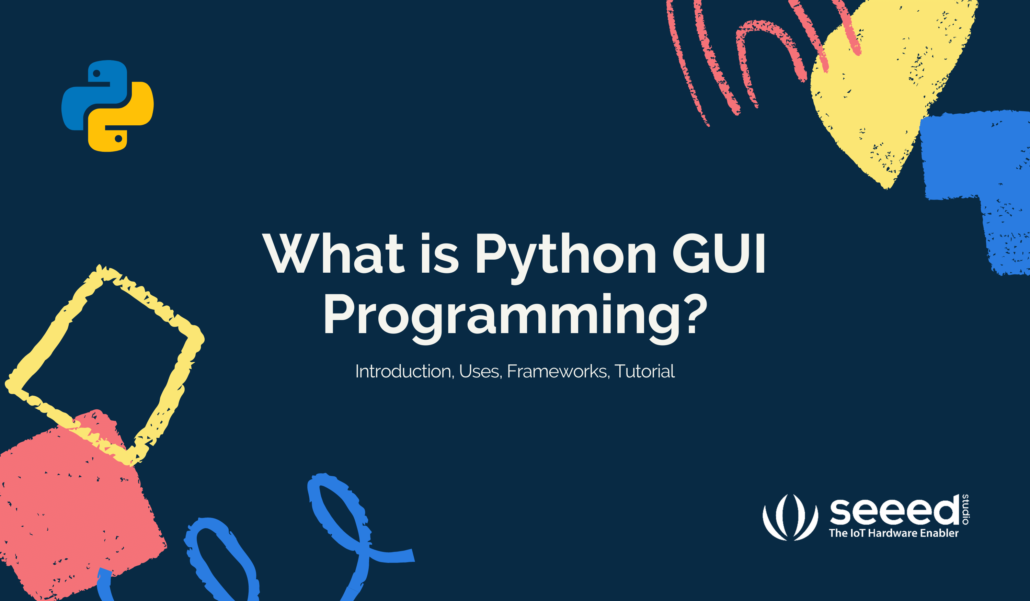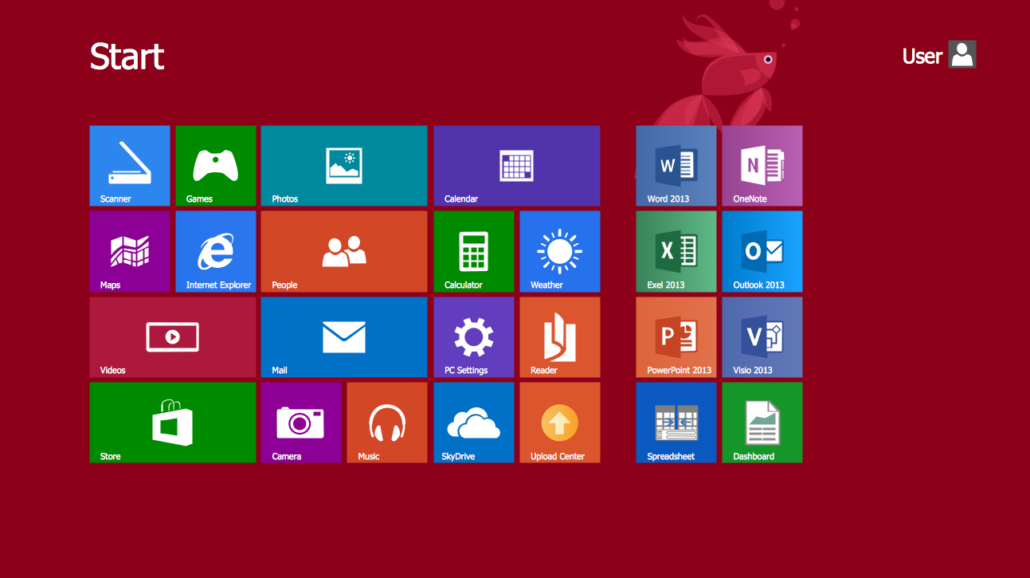What is Python GUI Programming? Uses, Frameworks & Tutorial
GUI stands for Graphical User Interface, and refers to computer programs that provide a visual means for users to interact with an underlying application or system. For example, the GUIs on our mobile phones allow us to interact with different functions through the display, which we can touch, tap, and swipe on. In this article, we’re looking at exactly what Python GUI Programming is, why it is useful, and how you can get started with building one of your own!

What is a Python GUI?
Very simply, a Python GUI is a GUI that is written in the Python programming language.

Python is a very popular programming language thanks to its great degree of readability, widespread adoption and most importantly, its beginner friendliness. While being incredibly useful for the fields of data science and machine learning, Python is also great for developing graphical user interfaces! In fact, it has many frameworks that even beginners can use to easily get started with developing a GUI.
Thus, if you’re starting out with learning Python and want to take it to the next level with GUI programming, this article is for you!
Python GUI Uses
You can do many things with Python GUI programming – but here are a few of the popular examples!
Building a Mobile Application
With interfaces for users to like, post, comment, or interact in many kinds of ways, mobile applications are some of the best examples of Python GUIs in action! Did you know that some of these popular and successful mobile applications were written in Python? How many of them do you recognise or use yourself?
Games (Flappy Bird, Mount & Blade)
Apart from mobile applications, Python has been used to create some of the games that we know and love! With flashy graphics and rewarding interactivity, games are one use case that heavily leverage GUIs to create value and enjoyment for users. For example, games like Flappy Bird and Mount & Blade were programmed in Python!
Human Machine Interfaces in Industries
Although GUIs have great uses in entertainment and utility, they also play an important role in industries through Human Machine Interfaces (HMIs). HMIs are GUIs that provide operators with an overview of industrial monitoring and control systems, as well as the means to rectify any anomalies in operating conditions. With Python, it’s easy to develop industrial applications at a lower cost, which is an extremely important factor to consider for businesses!
I’ve talked about HMIs, their uses and importance in industries in my previous article. Be sure to check it out here!
Popular Python GUI Frameworks
Part of the reason that Python is so popular for GUI programming is none other than the frameworks available. While there are many options that are available for developers with different and unique tastes, here are some of the more popular ones to get you started.
Tkinter
Tkinter is considered as the de-facto GUI toolkit for many Python developers, with many beginners picking it up as their first GUI programming framework. Because of this, there are also plenty of resources to start learning, like this complete tutorial by freeCodeCamp.org. It also comes with most installations of Python, so there’s a good chance that you might already have access.
What makes Tkinter stand out is its modularity with widgets. Each widget exists as a customisable component, and widgets can be combined to build a complete GUI with ease. Some examples of widgets are frames, buttons, checkbuttons, labels, dialogs, etc. You can also view the complete list of widget types and customisable attributes here.
Qt for Python: PySide2 / Qt5
PySide2 and Qt5 are not exactly the same framework, but they were developed by the same company under the Qt for Python project, which essentially increases compatibility between the two frameworks to having nearly 99.9% identical APIs.
The two frameworks are known for their world renowned APIs, with power and simplicity for Python developers. There are also tons of documentation and examples for beginners and experts alike to use in developing their application. Qt for Python stands out with its extensive community support with over 1M+ software developers, making it an attractive choice who love bouncing ideas off other minds during development!
If you’re keen to understand the deeper differences between PySide2 and Qt5, this article by Martin Fitzpatrick provides a great rundown.
PySimpleGUI
PySimpleGUI was developed by Mike B in 2018 with the aim of making GUI programming easier for Python beginners. It combines the features of multiple popular Python GUI frameworks such as Qt and Tkinter, by providing standardised code that beginners can use to build GUIs lego-style. Naturally, this means that even beginners can easily create beautiful and intuitive interfaces without having to dive into the intricacies of complex framework features!
PyGUI
Last but not least, we have PyGUI, which is short for Python GUI. PyGUI allows developers to create user interfaces through native elements for Python applications. It works with a lightweight API, thanks to minimal additional code between the Python application and the platform that it runs on, so this is a great option if you’re looking for a barebones solution for Python GUI programming!
Develop a Python GUI using Qt for Python with reTerminal
Depending on the platform, a simple GUI programmed in Python can be incredibly effective. One example that I shared earlier was the use of GUIs as HMIs in industrial control and monitoring systems. Software aside, the hardware for HMIs can be extremely integral to their success in practical use. For instance, they should be able to provide a clear overview of industrial processes with a large display, while not being bulky to the extent of hindering hands-on operations.
The reTerminal is Seeed’s solution to an industrial-grade IoT enabled human machine interface (HMI). Powered by the Raspberry Pi Compute Module 4, reTerminal sports a beautiful 5 inch LCD display, a great range of I/O capabilities, and machine learning infrastructure. It has been purposefully designed to enable modern applications in any context, including smart cities, manufacturing or agriculture. reTerminal is additionally Azure IoT Plug and Play certified, making it super easy to develop cloud-connected IoT applications!
New to Python GUI programming? No worries! Our Seeed Wiki has tons of step-by-step tutorials that will help you develop your very first user interface in not only Python, but also other popular frameworks like Flutter and Electron. You can click here to explore the step-by-step tutorial for developing a Python GUI using Qt for Python on reTerminal!
Keen to pick a reTerminal up to kick off your Python GUI programming journey? Read more on the Seeed Online Store today!
Ending Off
In this article, we’ve gotten a brief look at GUIs or graphical user interfaces, their uses, and why Python is so popular for GUI programming. Although there are many frameworks that will be certain to help you achieve your goals and more, your final choice may boil down to a matter of preference. Nonetheless, it’s a great opportunity to explore and have a feel for what each of them offer!
To learn more about the use of GUIs in human machine interfaces, I once again strongly encourage you to read my previous article!